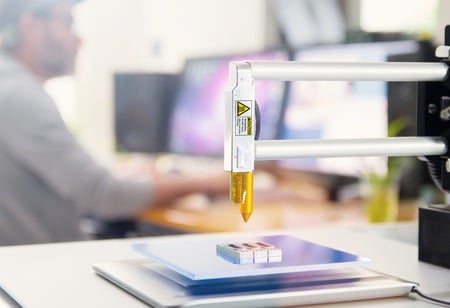
3D printing continues to advance as a viable manufacturing option. From SLA to laser sintering/melting techniques, it is now possible to create a working part from a very wide variety of materials. 3D printed metal parts/products is growing rapidly, particularly in those industries where products are very complex and have limited quantities.
If you foresee 3D printing of metal parts, this article is intended as only a very brief introduction to a complicated subject. If you have more interest, we suggest you check out this website (www.techbriefs.com) for more. There, and particularly in the NASA Tech Briefs May, 2016, magazine issue you will find news of significant 3D metal printing developments using SLM (selective laser melting).
Stereo Lithography (SLA) and Fused Deposition (FDM) are processes using polymers and plastic materials and have been in use for some time . Proficient Sourcing has been involved in producing production parts using FDM, and here is an admirable early 3D printing application: https://www.totalcontact.com/. Contact us if you have an application for FDM—a working plastic part can be available in a matter of days if you have a good print.
3D printing of metals requires more difficult technologies. However, if your interest is to limit design time and accordant tooling where change is more highly likely, then 3D metal printing may be in your future. Depending upon the turnaround time available from your supplier of choice, the use of 3D printing to make a part means you go from drawing to part without tooling or patterns, and usually much faster than is otherwise available. In some cases, complex manufacturing involving multiple stages (machining, welding, etc) can be accomplished in a single 3D process. If design changes are needed, they can be accomplished very quickly as well.
Just imagine a situation where the final item is extremely complex, with a great deal of design uncertainty. Here an available 3D printing capability could produce parts and successive ones much faster than traditional methods. Ideally, with a ready CAD drawing a part could be made in a matter of hours! And a design change means just change the drawing and the next generation part is again, perhaps hours away!
For example, a new design orthopedic implant could be developed quickly and subsequent modifications easily incorporated without any tooling, patterns, and perhaps even without finished machining.
Among the various technologies, there are 3 that appear most common. They are:
- Direct metal laser sintering: A structure is begun as a 3D CAD file The CAD file is sent to a DMLS machine center. which consists of an enclosure with an argon (inert) gas environment. Inside this enclosure a high powered laser sinters fine metal powder and creates a layer by layer structure that can be extremely complex.
- Selective laser melting (SLM) is similar to DMLS, but the powder is fully melted to form the layers for the product. The advantage probably is that more dense products can be produced in this way.
- Electron Beam Melting (EBM), another similar process, uses an electron beam in lieu of a laser to melt the metal powder.
Each of these processes has its advantages and disadvantages. But all involve the melting, or at least partial melting, of metal powders, and thus can create significant changes to the metal structure itself in the process. It is important to understand properties are not generally equivalent to wrought or cast parts and there may be a significant distortion risk when there are varying thicknesses compared to part length or height.
In any case, many metal materials are currently in use with one or more of these 3D processes. The most common are steel, stainless steel, aluminum alloys, titanium and its alloys, nickel based alloys, cobalt chrome alloys, and copper alloys.
Proficient Sourcing has knowledge of several firms that have 3D printing capabilities for metal parts, and a much closer relationship with a FDM 3-D plastics company (see below). Just give us a call (513) 489-5252 or https://proficientsourcing.com/.

